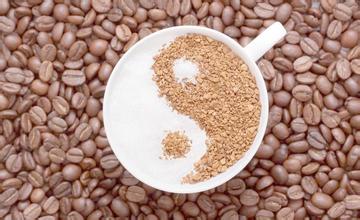Introduction to the record of baking degree of Costa Rican coffee by taste treatment method
Costa Rican coffee is full of particles, with ideal acidity and unique aroma. Costa Rica's coffee industry, formerly controlled by the Instituto del Café de Costa Rica (ICAFE), has been taken over by the Official Coffee Council (Oficin del Café). Among coffee exports, those deemed substandard are colored with blue vegetable dye before being recycled for domestic sale. Coffee consumed domestically (dyed blue or undyed) accounts for about 10% of total production, and local coffee consumption per capita is twice that of Italy or the United States.
This coffee producer, all grades and varieties, accounts for one-third of global consumption and a share of the global coffee market.
made in
made in
Although Costa Rica faces natural disasters several times higher than other regions, its arable area is enough to compensate.
There are many kinds of coffee here, but its industrial policy is large and cheap, so there are not many excellent coffee, but it is a good choice to mix other coffees.
One of the most famous is Mountain Costa Coffee, which tastes mellow and neutral. It can be boiled directly or mixed with other kinds of coffee beans. It is also a good choice.
Other types of Brazilian coffee, such as Rio, Parana, etc., can be produced in large quantities without too much care. Although the taste is rough, it is a kind of inexpensive coffee. Due to its distribution in all parts of the country, the solid quality varies, and there are its own standards (NO.2~NO.8 according to the number of impurities, NO.13~NO.19 according to the size of beans, divided into six grades according to taste). Almost all Arabica varieties are of good quality and stable prices, the most famous being Costa Rica, which has been a necessity for blended coffee since ancient times and is familiar to the public.
Excellent Costa Rican coffee is known as "extra hard beans" and can grow at altitudes above 1500 meters. Altitude has always been a problem for coffee growers. The higher the altitude, the better the beans, not only because higher altitudes increase the acidity of the beans and thus enhance the flavor, but also because the lower night temperatures at higher altitudes can slow down the growth of trees and thus enhance the flavor of the beans. In addition, due to the high altitude drop caused by sufficient rainfall, coffee tree growth is very favorable.
Costa Rican coffee is all Arabica beans, washed, it is bright style, full of aroma, clear as wind chimes in the breeze, and mild acid, sweet quite good. Because of the sweet taste, even if the coffee is cold, it is also very good to drink, which is a major feature of Costa Rica coffee. Therefore, it is recommended that you taste Costa Rican coffee with only a small amount of sugar and creamer in order to enjoy its girlish pure flavor.

Important Notice :
前街咖啡 FrontStreet Coffee has moved to new addredd:
FrontStreet Coffee Address: 315,Donghua East Road,GuangZhou
Tel:020 38364473
- Prev

Introduction to the taste characteristics of Hawaiian Kona Coffee Flavor description, Grinding degree and Baking degree treatment
Kona coffee is indeed a treasure in the world and is not easy to find. The real Hawaiian Kona coffee has the sweetness of caramel, which makes people enjoy the unique pleasure and leads you slowly into the detached state of tasting coffee. Of all the coffee producers, Hawaii has the most stringent management of the coffee industry, the highest labor costs and the best level of investment. Coffee from Hawaii
- Next

Dominica coffee with excellent acidity and pleasant aroma. Introduction to fine coffee beans.
The earliest coffee in Dominica was introduced from Martinique (the overseas province of France), dating back to the early 18th century. Dominica is an island country with a tropical climate. The temperature changes little throughout the year. Except for the lower temperature in the Central Cordillera Mountains, which can reach less than 0 ℃ in winter, the annual average temperature in other areas is between 25 and 30 ℃, which is affected by the mountain topography.
Related
- Detailed explanation of Jadeite planting Land in Panamanian Jadeite Manor introduction to the grading system of Jadeite competitive bidding, Red bid, Green bid and Rose Summer
- Story of Coffee planting in Brenka region of Costa Rica Stonehenge Manor anaerobic heavy honey treatment of flavor mouth
- What's on the barrel of Blue Mountain Coffee beans?
- Can American coffee also pull flowers? How to use hot American style to pull out a good-looking pattern?
- Can you make a cold extract with coffee beans? What is the right proportion for cold-extracted coffee formula?
- Indonesian PWN Gold Mandrine Coffee Origin Features Flavor How to Chong? Mandolin coffee is American.
- A brief introduction to the flavor characteristics of Brazilian yellow bourbon coffee beans
- What is the effect of different water quality on the flavor of cold-extracted coffee? What kind of water is best for brewing coffee?
- Why do you think of Rose Summer whenever you mention Panamanian coffee?
- Introduction to the characteristics of authentic blue mountain coffee bean producing areas? What is the CIB Coffee Authority in Jamaica?

